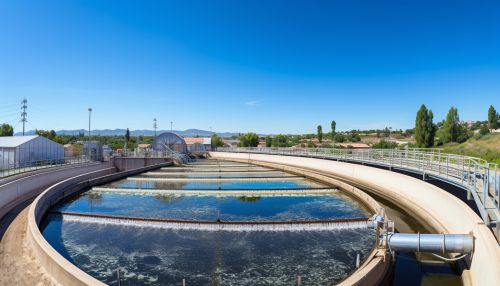Environmental Engineering
Introduction
Environmental engineering is a branch of engineering that focuses on protecting people from the effects of environmental degradation, such as pollution, as well as improving environmental quality. It involves the application of scientific and engineering principles to improve the environment, to provide healthy water, air, and land for human habitation and for other organisms, and to remediate polluted sites.
History
The field of environmental engineering has its roots in public health. In the 19th century, major cities began implementing large-scale sanitation systems to improve public health. These early efforts focused on waste disposal and water treatment, which are still key aspects of environmental engineering today. The field has since expanded to include air quality management, hazardous waste management, and other environmental concerns.
Sub-disciplines
Environmental engineering encompasses several sub-disciplines, including:
- Water resources engineering: This sub-discipline involves the management of water resources, including the design of water supply and irrigation systems, flood control, and the treatment of wastewater.
- Air quality engineering: This sub-discipline focuses on the control of air pollution and the design of systems to improve air quality.
- Waste management engineering: This sub-discipline involves the design and management of systems for the disposal and treatment of solid and hazardous waste.
- Environmental remediation: This sub-discipline involves the treatment and cleanup of contaminated sites, such as former industrial sites or landfills.


Key Principles
Environmental engineering is based on several key principles, including:
- Sustainability: Environmental engineers strive to design systems that are sustainable, meaning they can meet the needs of the present without compromising the ability of future generations to meet their own needs.
- Ecosystem protection: Environmental engineers work to protect and restore ecosystems, which are vital for supporting life on Earth.
- Public health: Protecting public health is a key goal of environmental engineering. This involves ensuring access to clean water and air, as well as safe disposal of waste.
- Risk assessment: Environmental engineers use risk assessment to evaluate the potential impacts of environmental hazards and to design systems that minimize these risks.
Education and Training
To become an environmental engineer, one typically needs a bachelor's degree in environmental engineering or a related field. Some jobs may require a master's degree or higher. In addition, environmental engineers often need to be licensed as professional engineers, which requires passing a series of exams and gaining work experience.
Career Opportunities
Environmental engineers work in a variety of settings, including government agencies, consulting firms, and industries such as construction and waste management. They may also work in research or teaching roles at universities. Job duties can include designing and evaluating systems for water treatment, air pollution control, and waste disposal; conducting environmental assessments; and developing policies and regulations to protect the environment and public health.
Challenges and Future Directions
Environmental engineering faces several challenges and opportunities in the coming years. These include addressing the impacts of climate change, developing sustainable technologies, and managing the environmental impacts of urbanization and industrialization. The field is also likely to see increased demand for professionals with expertise in these areas.
